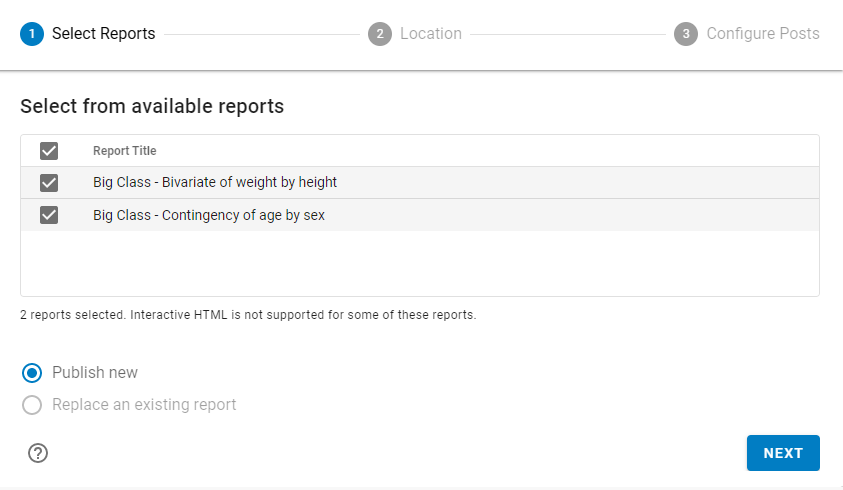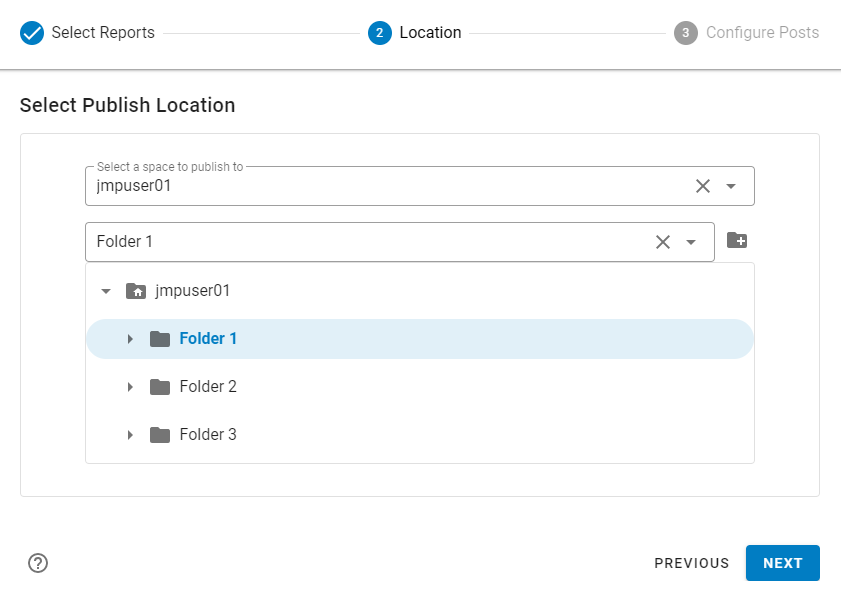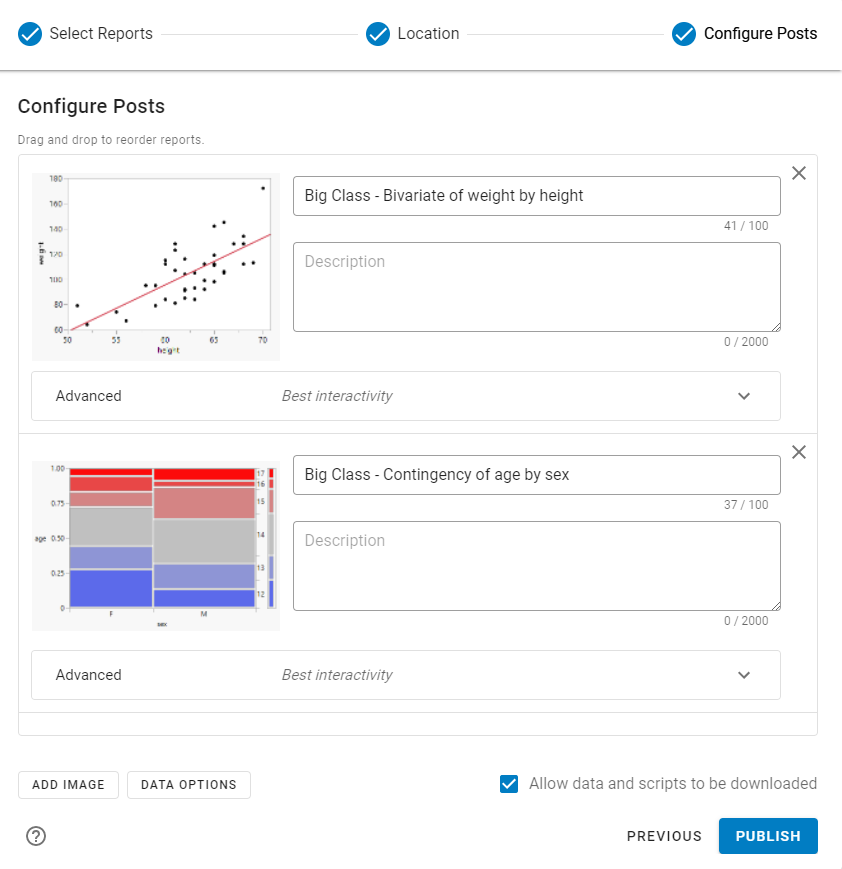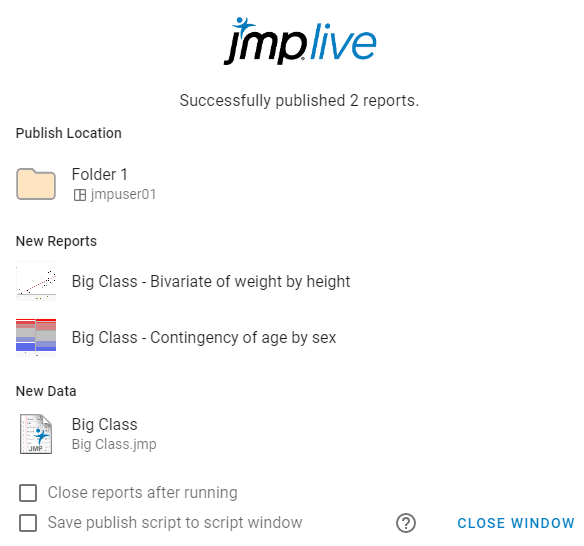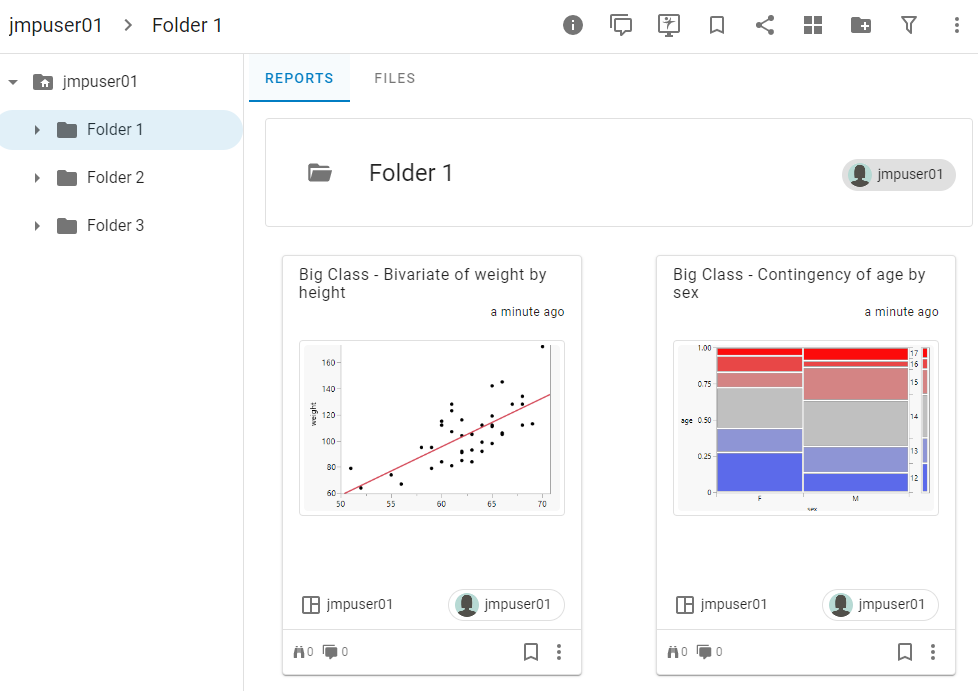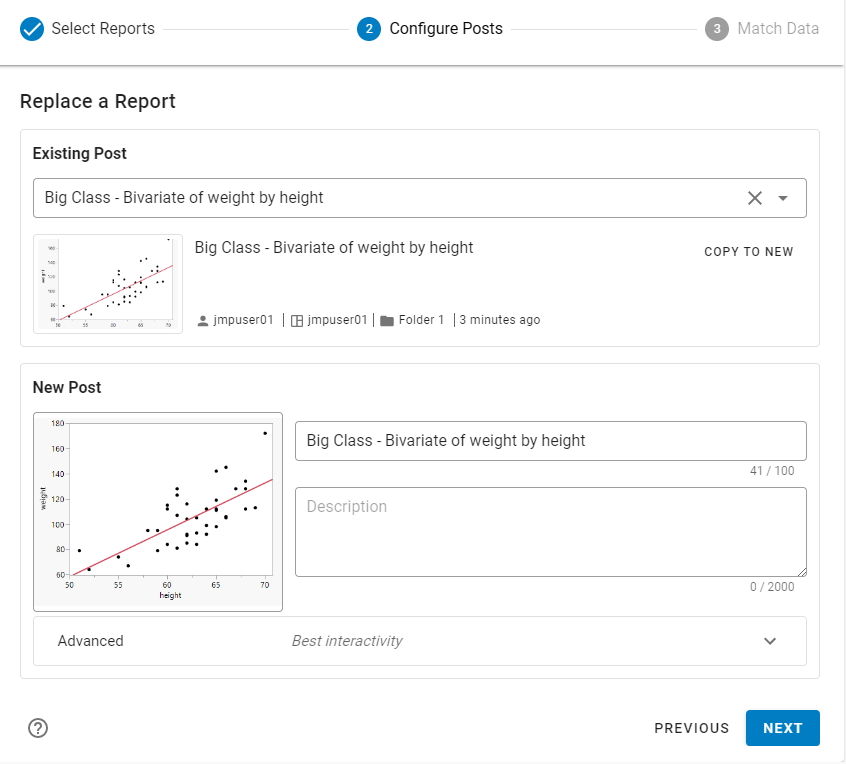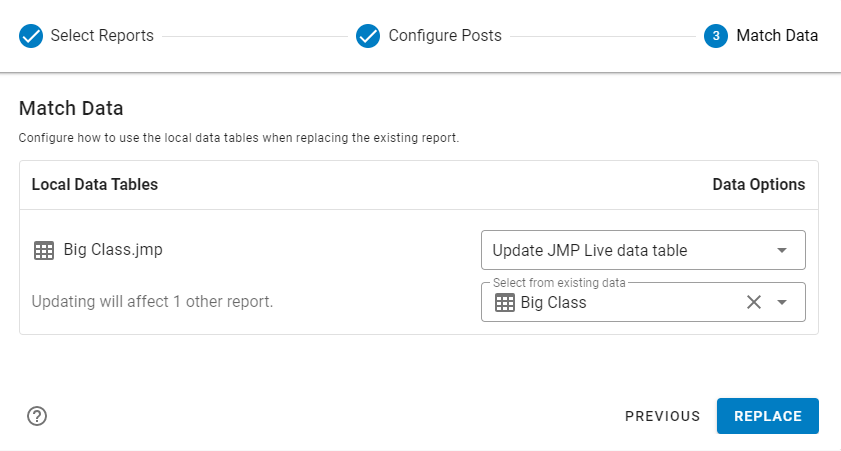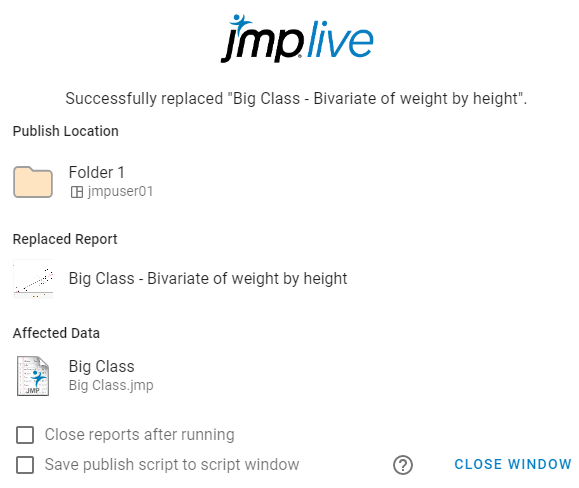Share Reports to JMP Live or JMP Public
JMP Live is a website purchased by your company for sharing JMP content privately. JMP Live can be hosted by SAS or your company. JMP Public is a website using similar technology as JMP Live, where anyone can share JMP content with the public.
JMP Live and JMP Public are platforms for sharing JMP data, visualizations, and dashboards. Prepare your reports or data tables in JMP and publish them as posts in spaces to collaborate with your colleagues, even those who might not have JMP.
JMP Live and JMP Public offer the visual interactivity of JMP to explore your data, and let you do the following:
• Store all of your reports and data in one location
• Control sharing of reports or data
• Maintain up-to-date reports and data for your team in an easily accessible location
Register and Sign Into a SAS Profile (JMP Public Only)
Before you can publish posts to JMP Public, you must register and sign in using a SAS profile.
Note: If you are not signed in to JMP Public, you see only featured posts.
1. In a browser, go to public.jmp.com.
Supported browsers include Chrome, Firefox, Safari, and Edge.
2. At the top right, click Sign in.
3. If you already have a SAS profile, log on using those credentials, then click Submit.
4. If you do not have a SAS profile:
a. Click Create profile. Complete the form and click Create profile.
b. Follow the instructions in the email to set your password and activate your profile.
Add a JMP Live Server
Before you can publish to JMP Live, you must add a JMP Live server.
Note: The first server that you add becomes the default. The default server is used for all interactive publishing and scripts that do not explicitly specify another server. If you add more servers, you can change the default server.
1. In JMP, select File > Publish > Manage Connections.
2. Click Add New.
3. Enter the JMP Live URL, formatted like this: https://jmpliveserver.com:3501 (where 3501 is the default web server port).
4. Enter an identifying name for the connection, such as JMP Live.
5. (Optional) If you want to use JSL to create JMP Live reports, enter an API key. For details, see Get an API Key in the Scripting Guide.
6. Click Next.
7. Sign in to the JMP Live server with your user name and password.
8. Once the connection is created successfully, click Save.
The server name appears under Select a connection.
9. Click Exit.
Create and Publish JMP Reports
1. Create reports in JMP.
Tip: If your report contains a Local Data Filter, add columns before you publish, otherwise the Local Data Filter is static instead of active. To add columns, select them in the Local Data Filter and click the Add icon.
2. Select File > Publish > Publish Reports to JMP Live or Publish to JMP Public.
– (JMP Live only) If you have not added a JMP Live server, add one now. See Add a JMP Live Server.
– You might need to sign in to JMP Live or JMP Public.
Note: To register for a SAS login, visit jmp.com and click Sign In near the search box at the top of the page.
Figure 10.4 Select the Reports
3. Select the reports that you want to publish.
Tip: To choose all open reports, select the Report Title box. If you are replacing a report, you can choose only one report.
4. Choose what you want to do:
5. Click Next.
Publish a New Report
Figure 10.5 Select Where to Publish the Reports
1. Select an existing space from the list or enter text to find a space that you want to publish your report to.
You see only spaces that you have permission to publish to.
2. (Optional) Select an existing folder from the list or enter text to find the folder where you want to publish your report.
3. Click Next.
Figure 10.6 Update Report Options and Publish
4. (Optional) Update the title for each report.
5. Change additional options. See Report Options.
6. Click Publish.
Figure 10.7 Publish Status for Creating a New Report
7. (Optional) Choose any of these options:
– To close the JMP reports you published, select Close reports after running.
– To save your process as a JSL script, select Save publish script to script window.
8. Click a link to open JMP Live, or click Close Window.
Figure 10.8 Published Reports in a JMP Live Folder
Space access determines who can see your report post. For details, see the JMP Live Help.
Replace an Existing Report
Figure 10.9 Select an Existing Post
Note: You see only posts that you have permission to update.
1. Select an existing post from the list or enter text to find a post.
2. To use the existing title (and description, if applicable) click Copy to New. Or, under New Post, enter a new title (and optional description).
3. (Optional) Change advanced options. See Report Options.
4. Click Next.
Figure 10.10 Choose How to Publish Data
5. (Publish data only) Choose whether to update the existing data table, publish new data, or use an existing data table. To use existing data or update data, select a data table.
6. Click Replace.
Figure 10.11 Publish Status for Replacing a Post
7. (Optional) Choose any of these options:
– To close the JMP reports you published, select Close reports after running.
– To save your process as a JSL script, select Save publish script to script window.
8. Click a link to open JMP Live, or click Close Window.
Figure 10.12 Published Reports in a JMP Live Folder
Space access determines who can see your report post. For details, see the JMP Live Help.
Report Options
Description
(Optional) Add a description of the report that appears on the post’s thumbnail.
Advanced
Select Publish data for interactive reports. If you deselect this option, the reports are static. When selected, the data behind the report and a JSL script of the report are published.
Best interactivity
All supported aspects of the report are fully interactive.
Best performance
Images and graphs are not interactive, but supported data in the rest of the report remains interactive. If your data set is large, you might choose this option to increase the responsiveness of the report.
Tip: To avoid sharing sensitive data, save your results as a non-interactive web page. (For a single report, select File > Export > HTML. For multiple reports, select File > Publish > Publish to File and deselect Publish Data.)
Warnings enabled
(Applicable for platforms that support control charts only.) Notifies interested parties when the report has control chart warnings. Interested parties can include subscribers or groups that have warnings enabled.
Add Image
Adds an image as a static, image-only report.
Data Options
Choose whether to publish new data or use existing data in the JMP Live space you are publishing to.
Allow data and scripts to be downloaded
Allows data tables and scripts associated with the reports to be downloaded. If you do not select this option, in JMP Live there is no download option next to the data table names and no JSL script to re-create the report. See Note on Data Accessibility.
Delete icon 
Deletes a report.
